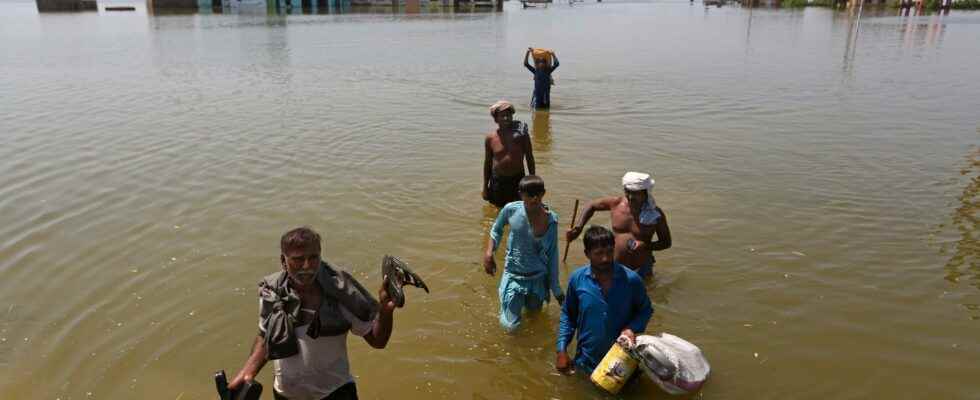Published: Less than 10 min ago
1 of 4Photo: Fareed Khan/AP/TT
Places that once housed people’s homes still look like lakes, months after this summer’s floods in Pakistan.
The water is believed to remain until at least Christmas – but the consequences of the disaster are feared to remain well into next year.
– I have driven through areas and thought I was looking out over a lake, then it turns out to be a flooded area, says Ylva Jonsson Strömberg, head of crisis preparedness at the Swedish Red Cross.
She is in Sindh province, which along with Baluchistan was hit hardest by this summer’s flood disaster. Three times as much rain as usual and water from melting glaciers led to a third of the country being covered in water, much of which remains. Over 1,700 people have lost their lives so far – a third of them children.
Far more have lost their homes, and the farmlands they live on. This means that even if, according to the calculations, the water recedes in time for Christmas, next year’s harvest has already been lost for millions of people.
– It is a very tough situation to be in, to be in the hands of aid organizations to give you something to eat, says Ylva Jonsson Strömberg.
Lack of medicines
The people of Pakistan are reeling, and are already trying to sort out which bricks can be reused from the razed homes to build new homes. But they will live in vulnerability for a long time to come. The stagnant water attracts hordes of disease-spreading mosquitoes, and many deaths have occurred from diarrheal diseases, dengue fever and malaria – while 1,500 hospitals and clinics have been crippled, according to the AFP news agency. Cholera has also occurred.
And although temporary care facilities have been put in place, help does not reach everyone in need.
– There is also a lack of medicines, because it is difficult to get around on the roads.
Hit the hardest
In Pakistan, the conversations about climate change are more about the effects they have on the ground – the unpredictability of the weather, difficulties in planning the harvest and of course the disasters that are occurring more and more often – than about abstract issues at policy level, says Ylva Jonsson Strömberg.
But for her, it is obvious that the monsoon rains and the melting glaciers are a result of global warming. While Pakistan is one of the countries expected to suffer the worst from the consequences of climate change, the country, which in terms of population is the world’s fifth largest – close to 2.8 percent of the world’s inhabitants are Pakistanis – accounts for only 0.8 percent of greenhouse emissions, according to AFP.
– It is not reasonable that the very poorest countries in the world should bear the burden on their own, she says.
Facts
Pakistan
Pakistan as an independent state has had a checkered history since the partition of then British India in 1947.
The country is on paper a Muslim republic with 225 million inhabitants. Poverty, internal strife and widespread corruption have characterized the past decades.
The country suffers from an uneven distribution of power where much of the economic power is concentrated in a few families.
GDP per inhabitant was in 2020 at 1,189 dollars, to be compared with Sweden’s figure which in the same year was 52,274 dollars.
Sources: NE, UI/Landguiden
Read more
